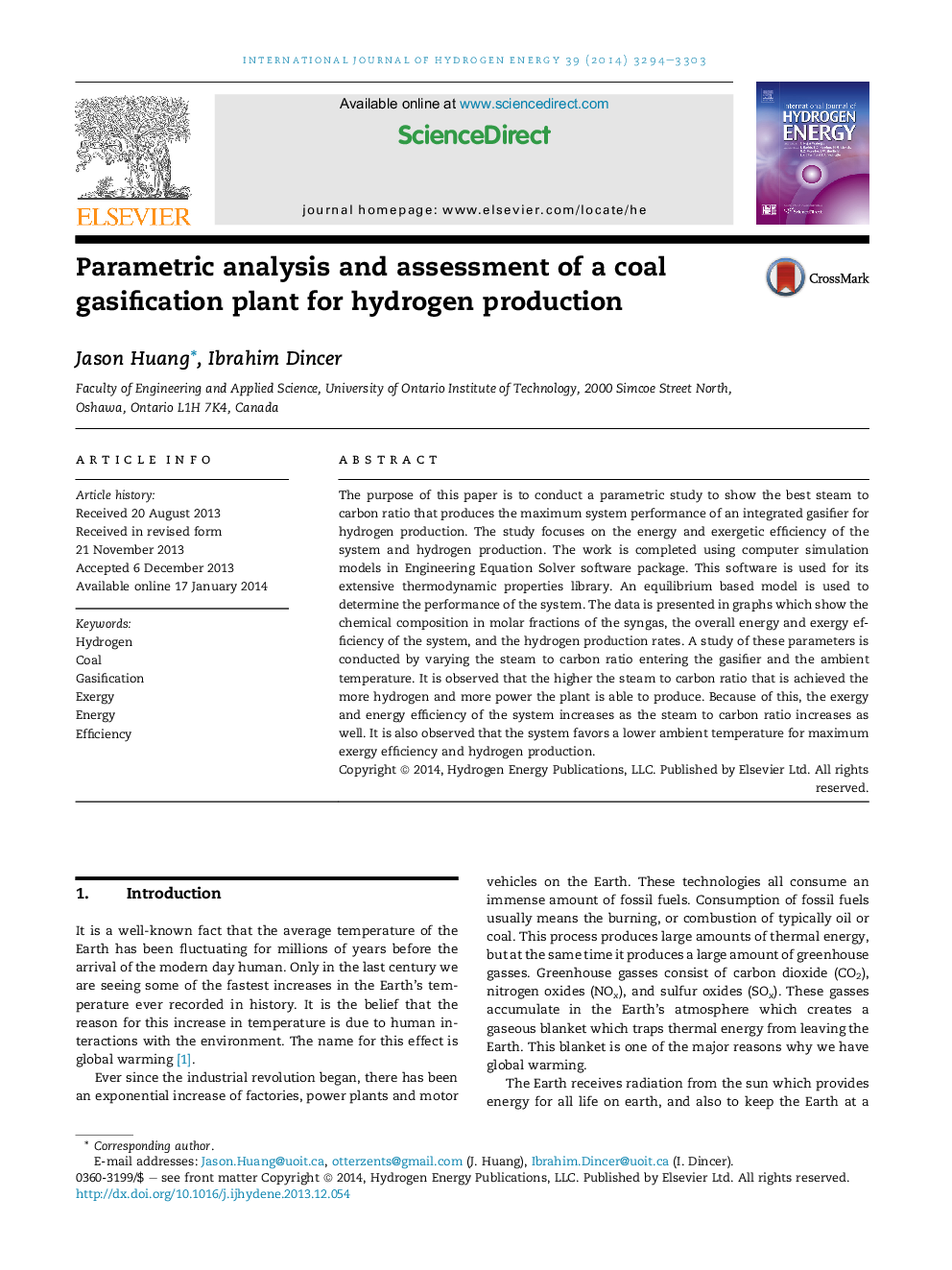| Article ID | Journal | Published Year | Pages | File Type |
|---|---|---|---|---|
| 1270633 | International Journal of Hydrogen Energy | 2014 | 10 Pages |
•A hydrogen production gasification system is analyzed using computer simulation.•The analysis uses the first and second law of thermodynamics to study the system.•Increasing the steam to carbon ratio increases first and second law efficiency.•Increasing the steam to carbon ratio increases hydrogen production.•Overall the system benefits from a high steam to carbon ratio.
The purpose of this paper is to conduct a parametric study to show the best steam to carbon ratio that produces the maximum system performance of an integrated gasifier for hydrogen production. The study focuses on the energy and exergetic efficiency of the system and hydrogen production. The work is completed using computer simulation models in Engineering Equation Solver software package. This software is used for its extensive thermodynamic properties library. An equilibrium based model is used to determine the performance of the system. The data is presented in graphs which show the chemical composition in molar fractions of the syngas, the overall energy and exergy efficiency of the system, and the hydrogen production rates. A study of these parameters is conducted by varying the steam to carbon ratio entering the gasifier and the ambient temperature. It is observed that the higher the steam to carbon ratio that is achieved the more hydrogen and more power the plant is able to produce. Because of this, the exergy and energy efficiency of the system increases as the steam to carbon ratio increases as well. It is also observed that the system favors a lower ambient temperature for maximum exergy efficiency and hydrogen production.
